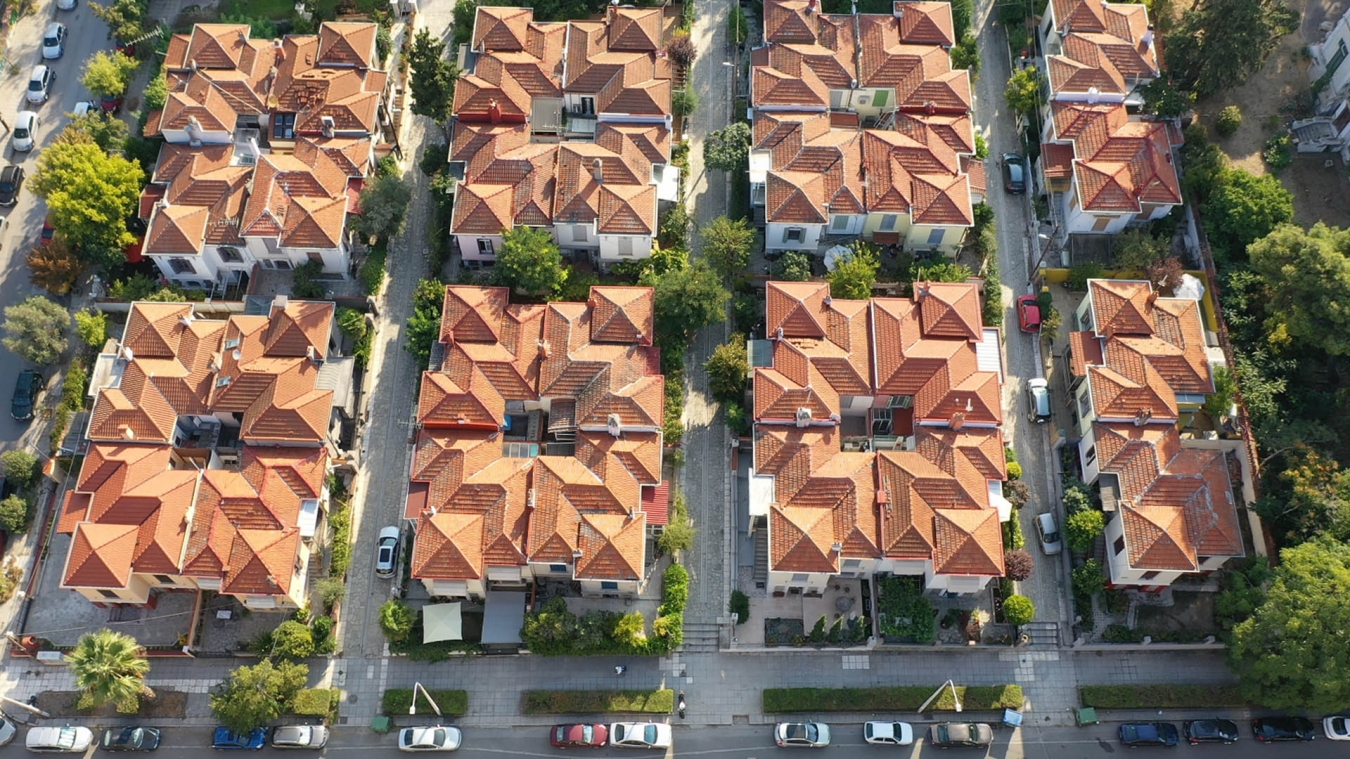Ouziel Complex: A nostalgic touch from Thessaloniki of the past

Not far from the city center, on its eastern side, between Villa Alatini (which today houses services of the Region of Central Macedonia) and Villa Morpurgo, there is something we did not expect to find in a big city. A neighborhood of old single-family houses, beautiful but spare. They all look alike, and all have tiled roofs and elegant wooden windows. Cobbled streets, climbing plants, rose yards and arbors complete the doll picture. Almost all appear to be inhabited or relatively recently inhabited, dilapidated no more than 1-2 houses.
The small settlement of 28 single-family houses built in 1927 was the inspiration of the contractor David Uziel, who was one of the main shareholders of the Thessaloniki Railway Company (the tram). Uziel collaborated with the important architect Jacques Moshe. The Uziel district is not the best-known creation of Jacques Moshe in Thessaloniki. His own design is the Olympian in Aristotelous Square, as well as the Olympos-Naoussa restaurant on the old beach (which was recently renovated and is reopening).
The gaze of the passers-by stays on the extravagantly beautiful single-family houses with their yards sown with rose bushes and climbing plants on pergolas, mandarin trees loaded with mandarin oranges, ferforge furniture and an aesthetic that exudes something from an era full of sweet memories.

Uziel – or Exoches - was declared a conservation area in the 1980s.
Today, historic buildings are far outnumbered by modern apartment blocks, but the storied few that remain are central to the culture of the city.
The Villa Allatini (Vitaliano Poselli, 1898), once the elegant prison of Abdul Hamid II, is now a government building, while the Ouziel Complex (Jacques Moshé, 1925-1927) remains what it’s always been, a collection of charming private homes. The Casa Bianca (Pierro Arrigoni, 1912-13), home to Thessaloniki’s favorite love story, was rescued from near ruin and is now the splendid home of the Municipal Art Gallery, while the Cultural Foundation of the National Bank of Greece has beautifully restored the Villa of Mehmet Kapandji (Pierro Arrigoni, 1893). The Villa Modiano (Eli Modiano, 1906) is currently home to the Folk Life and Ethnological Museum of Macedonia and Thrace.
The Geni Tzami (Vitaliano Poselli, 1902), the mosque of the Ma’min community, housed the archaeological museum for years. It’s now a cultural space, under the auspices of the Municipal Art Gallery. The Exoches was a sociable district, and it still is: there are fine cafés in the gardens of the Villa Modiano and the Casa Bianca, as well as at the Epavli Marokkou by the Villa Chatzilazarou, and at the former Villa Michailidi, near the Geni Tzami. Belle Epoque glamour hasn’t vanished from the Exoches, and it’s doubtful that history has finished with this area yet, either.

